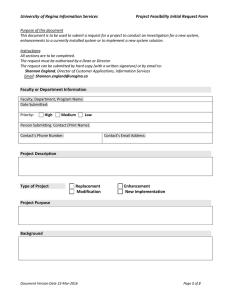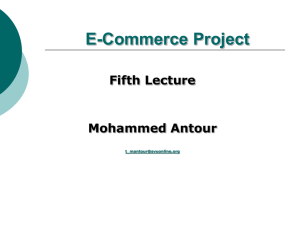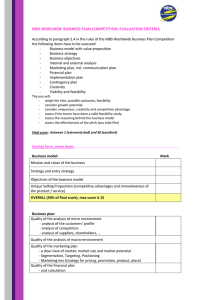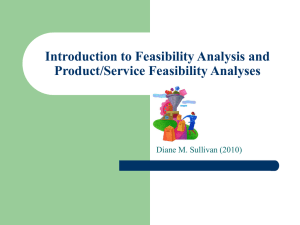Feasibility Analysis
advertisement
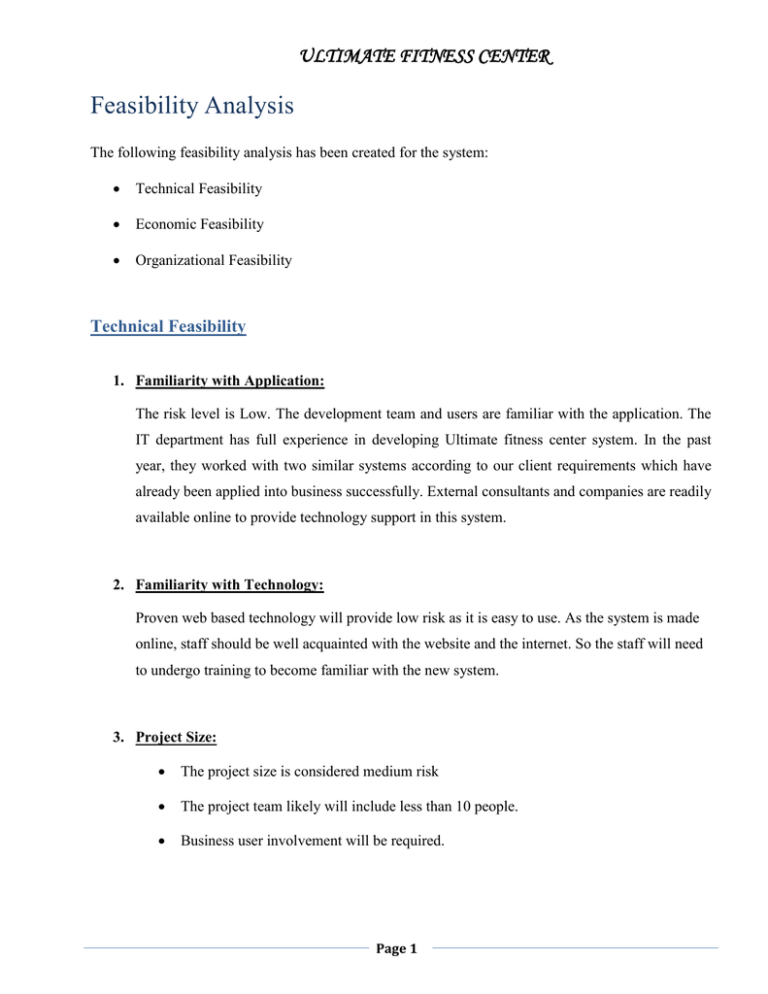
ULTIMATE FITNESS CENTER Feasibility Analysis The following feasibility analysis has been created for the system: Technical Feasibility Economic Feasibility Organizational Feasibility Technical Feasibility 1. Familiarity with Application: The risk level is Low. The development team and users are familiar with the application. The IT department has full experience in developing Ultimate fitness center system. In the past year, they worked with two similar systems according to our client requirements which have already been applied into business successfully. External consultants and companies are readily available online to provide technology support in this system. 2. Familiarity with Technology: Proven web based technology will provide low risk as it is easy to use. As the system is made online, staff should be well acquainted with the website and the internet. So the staff will need to undergo training to become familiar with the new system. 3. Project Size: The project size is considered medium risk The project team likely will include less than 10 people. Business user involvement will be required. Page 1 ULTIMATE FITNESS CENTER 4. Compatibility with the existing system: This is a low-risk project as the system uses proven Microsoft technology (ASP.Net). Since the existing process is manual the new system does not pose any compatibility challenges. Time frame is 5 months to system completion and implementation. Economic Feasibility According to the cost-benefit analysis below, the new system is considered to be economically feasible. The figures in cost-benefit analysis represent the tangible benefits. Cost –Benefit Analysis 2009 Benefits Increased Sales from New Customers Increased sales from Existing Customers Reduction in Man Hours Total Benefits Development Costs Labor: Analysis and Design Labor: Implementation Development Training Software Hardware Total Development Cost Operational Cost Labor: Administrator Labor: Technical Operators Labor: Operations Analyst Labor: Five Technicians Software Upgrades Communications Charges Software Licenses Hardware Upgrades Total Operational Cost $25,000 $60,000 $3,000 $10,000 $6,500 $104,500 2010 2011 $400,000 $440,000 2012 TOTAL $1,324,000 $200,000 $220,000 $484,000 $240,000 $100,000 $700,000 $0 $660,000 $0 $724,000 $100,000 $2,084,000 $0 $0 $0 $0 $0 $0 $0 $0 $0 $0 $0 $0 $0 $0 $0 $0 $0 $0 $25,000 $60,000 $3,000 $10,000 $6,500 $104,500 $50,000 $40,000 $50,000 $70,000 $2500 $1000 $1500 $1000 $216,000 $53,000 $43,000 $53,000 $73,000 $2500 $1000 $1000 $500 $227,000 $57,000 $47,000 $57,000 $77,000 $2500 $1000 $1000 $500 $243,000 $160,000 $130,000 $160,000 $220,000 $7500 $3000 $3500 $2000 $686,000 Page 2 $660,000 ULTIMATE FITNESS CENTER Total Costs $104,500 $216,000 $227,000 $243,000 $790,500 Total Benefits - Total Costs Cumulative Net Cash Flow ($104,500) $484,000 $433,000 $481,000 $1,293,500 ($104,500) $379,500 $812,500 $1,293,500 Return on Investment (ROI) Break-even Point (1,293,500/ 790,500) 0.21 1.6363 163% Intangible Benefits This system will speed up the business processes. Attracting customers and improving satisfaction by allowing online registration and bill payment. It will reduce the number of staff members needed to manage the business. Minimize errors in record keeping. Easy approach for advertising. The system is flexible and will meet goals for future business expansion. Organizational Feasibility Our new system has a low level of risk from the organizational perspective. The important goals of our system are to increase sales and customer satisfaction. The product development updates is regularly monitored and enhanced by a Product Champion, John smith. The users of the new system, employees and the managers are expected to accept the system contingent upon increased sales and userfriendliness. The system will add value to the current business model. Page 3





